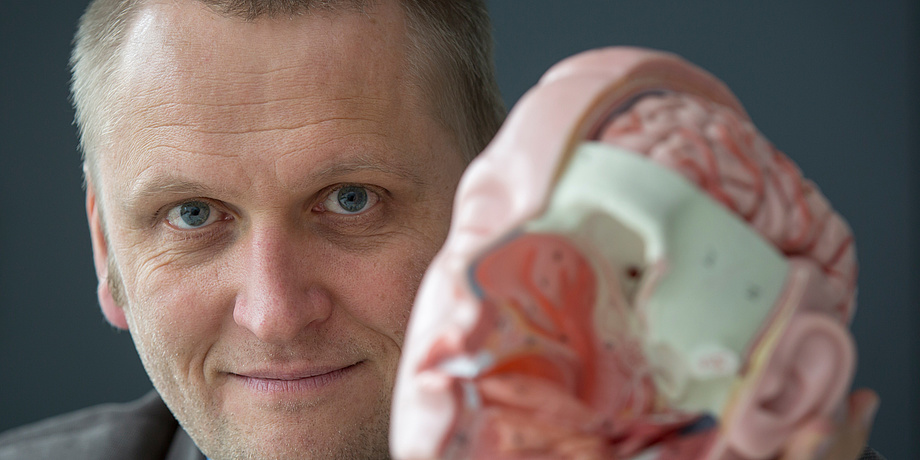
Imagine being "locked in" with a neurodegenerative disease like late-stage ALS (Lou Gehrig's Disease) or being completely paralyzed by a traumatic spinal cord injury. You could still think and dream and feel emotions, but you wouldn't be able to express them. For decades, researchers have been experimenting with brain-computer interfaces, BCIs for short, to give deeply disabled people the power to communicate using nothing more than their minds.
In recent years, BCI technology has empowered disabled people to write messages, send emails, surf the internet, control a smart home, and even move a motorized wheelchair. And in 2010, a research group in Germany used BCI to enable the first "brain painting" by people with ALS, effectively unlocking the creativity of paralyzed artists.
Now a team of neural engineers in Austria has expanded the artistic potential of BCIs by building the first music composition program that's controlled exclusively with the brain. The researchers tested the mind-machine technology with a group of healthy volunteers who were able to both copy musical melodies and compose original music with impressive accuracy, according to a paper published in the journal Plos One.
Lead author Gernot Müeller-Putz, head of the Institute of Neural Engineering at the Graz University of Technology in Austria, said he was inspired by the success of the brain-painting program and the satisfaction it gave to the ALS patients, many of them former artists.
"They've had exhibitions. They sell their work," Müeller-Putz told Seeker. "Why not try it with music and composing?"
RELATED: Making Music Using Only Your Brain Is Easy With the Encephalophone
The latest BCI technology is different than other interfaces that let you literally play music with your thoughts. Instead of using brain waves to calibrate musical tones, this technology makes it possible to do any operation that can be executed with a series of individual characters or commands.
Sign up for the Live Science daily newsletter now
Get the world’s most fascinating discoveries delivered straight to your inbox.
The technology can be used to spell a word letter by letter, or to select a paint brush size and paint color. Likewise, Müeller-Putz thought, it could be used to select a specific type of musical note — a whole note or quarter note, for example — and the tone of the note — A, B, C sharp — to write a musical score.
The technology behind the BCI has been around for 20 years and is based on a particularly strong brain signal called the P300 event-related potential. The brain signals are recorded by an electroencephalogram worn on the head like a swim cap. Since everybody's brain is a little different, the system needs to be calibrated to accurately read a subject's mind.
The calibration is done by having the subject stare at a computer screen displaying a six-by-six grid of letters. As the subject stares at the screen, a series of random flashes light up individual rows and columns of the grid. With each flash, the subject's brain responds by emitting a specific waveform. Each signal from the brain differs slightly according to where the flash occurs on the grid.
Once the calibration is over, it's time for the subject to try pick an individual character with their mind. The grid continues to randomly flash, just like before. The trick, said Müeller-Putz, is to focus your attention on the desired character and silently count every time that character's row or column flashes.
"The computer algorithms behind the BCI look up where the different waveforms appear, figure out at which row and which column it is, and then identify the character which was selected by the user," said Müeller-Putz, who has been working with BCIs since 1999.
Using your mind to select individual characters is a slow process, but easy enough to learn. In Müeller-Putz's experiments, a group of BCI novices were able to copy spelling words with greater than 88 percent accuracy on the first try. They had roughly the same success copying the musical notes to the popular folk song "Alouette," although it took them 21 minutes on average to pick out the melody's 25 notes.
RELATED: This Brain Implant Makes Telepathic Typing Possible
The researchers also invited one professional musician to try composing with his brain. He achieved greater accuracy (93.6 percent) on the copy-composing exercise using "Alouette," but still took 20 minutes to finish. He proved much more adept on the free composing portion of the experiment, where he was able to write a 26-note melody in only 14 minutes, twice as fast as the non-professional musicians who took 30 minutes to write songs that averaged only 18 notes.
Speed isn't a big concern, explained Müeller-Putz, since the people this technology is designed to help "don’t have the same hurried lifestyle that we do. Their perspective is a little different."
The team's initial experiments proved that a P300-based BCI works for music composition. The next step is to try it with disabled individuals and gather their feedback. The long-term goal, Müeller-Putz said, is to move from a laptop-based system to something small enough to fit on a smartphone. That's the best way to get it into the homes and hands of musicians who want to share their song with the world.
Originally published on Seeker.









